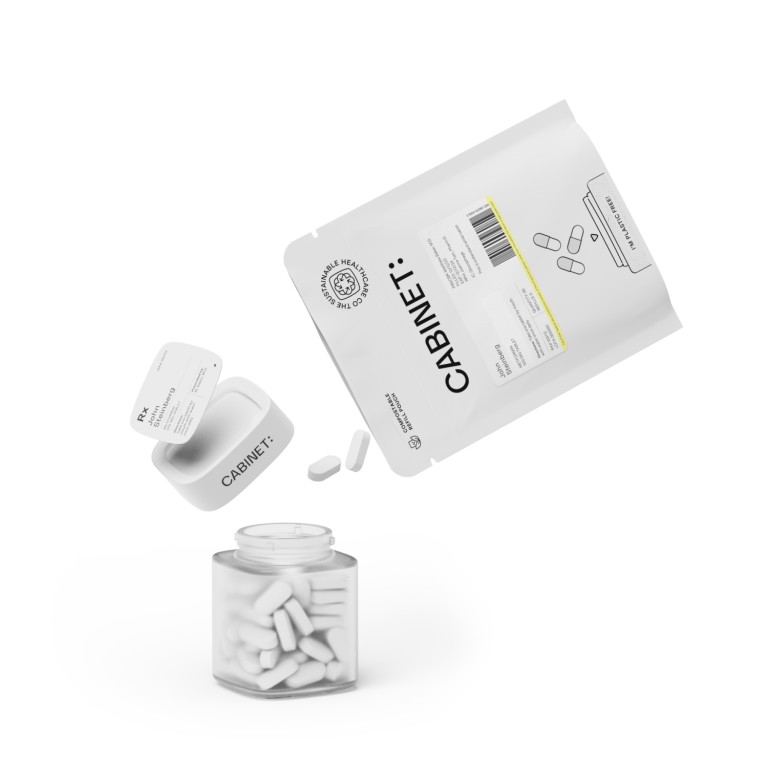Spironolactone is a medication that is commonly used to treat a variety of conditions, including high blood pressure, heart failure, and edema. However, it has also shown promise in the treatment of polycystic ovary syndrome (PCOS) and acne. In this article, we will explore the before and after results of spironolactone treatment for these conditions.
Understanding Spironolactone: Its Uses and Effects
Before diving into the before and after results of spironolactone treatment, it is important to have a clear understanding of what spironolactone is and how it works. Spironolactone is a potassium-sparing diuretic that works by blocking the hormone aldosterone. Aldosterone is responsible for promoting salt and water retention in the body, so by blocking its effects, spironolactone helps to reduce fluid buildup and lower blood pressure.
What is Spironolactone?
Spironolactone, also known by its brand name Aldactone, is in a class of medications called mineralocorticoid receptor antagonists. It is primarily used to treat conditions that involve excessive fluid retention, such as heart failure and edema. It is available in tablet form and is typically taken once or twice daily, depending on the individual's condition and response to treatment.
How Does Spironolactone Work?
Spironolactone works by blocking the activity of aldosterone, a hormone that regulates the balance of salt and water in the body. By inhibiting aldosterone, spironolactone helps to reduce fluid retention and lower blood pressure. Additionally, spironolactone has anti-androgen effects, which means that it can block the effects of male hormones like testosterone. This makes it an effective treatment option for conditions like PCOS and acne, which are often hormonally-driven.
When it comes to treating heart failure, spironolactone has shown great promise. It not only helps to reduce fluid buildup in the body, but it also improves the heart's ability to pump blood effectively. This can lead to improved symptoms and a better quality of life for individuals with heart failure.
In addition to its use in heart failure, spironolactone is also commonly prescribed for edema. Edema refers to the swelling caused by excess fluid trapped in the body's tissues. This can occur in various parts of the body, such as the legs, ankles, and abdomen. By reducing fluid retention, spironolactone can help alleviate the discomfort and pain associated with edema.
Another condition that spironolactone is frequently used for is polycystic ovary syndrome (PCOS). PCOS is a hormonal disorder that affects women of reproductive age. It is characterized by high levels of male hormones, irregular menstrual cycles, and the formation of cysts on the ovaries. Spironolactone's anti-androgen effects help to counteract the excess male hormones, leading to improved hormonal balance and reduced symptoms of PCOS.
Furthermore, spironolactone has been found to be effective in treating acne. Acne is a common skin condition that occurs when hair follicles become clogged with oil and dead skin cells. Hormonal imbalances, particularly an excess of male hormones, can contribute to the development of acne. Spironolactone's anti-androgen effects help to regulate hormone levels, reducing the production of oil and preventing the formation of acne.
It is important to note that spironolactone is not without its potential side effects. Common side effects include dizziness, headache, nausea, and increased urination. In rare cases, more serious side effects such as electrolyte imbalances and allergic reactions may occur. It is essential to discuss the potential risks and benefits of spironolactone with a healthcare professional before starting treatment.
In conclusion, spironolactone is a versatile medication that is used to treat a variety of conditions. Its ability to reduce fluid retention and block the effects of male hormones makes it an effective treatment option for heart failure, edema, PCOS, and acne. However, it is important to weigh the potential benefits against the possible side effects and consult with a healthcare professional for personalized advice.
The Before Phase: Patient Condition Prior to Spironolactone Treatment
Before starting spironolactone treatment, patients often experience a range of symptoms that can vary depending on the condition being treated. Let's take a look at some common symptoms and the initial diagnosis and treatment plan that may be implemented.
Common Symptoms Before Treatment
Patients seeking spironolactone treatment for conditions like high blood pressure and heart failure may experience symptoms such as swelling in the legs and ankles, shortness of breath, fatigue, and elevated blood pressure readings. Patients with PCOS may present with irregular menstrual cycles, excess facial and body hair, acne, and weight gain. Acne patients without PCOS may have persistent breakouts that do not respond well to topical treatments.
Initial Diagnosis and Treatment Plan
Upon presentation of these symptoms, a healthcare provider will conduct a thorough evaluation, which may include physical examinations, blood tests, and imaging studies. Once a diagnosis is confirmed, a treatment plan will be devised. For patients with high blood pressure or heart failure, spironolactone may be prescribed as part of a comprehensive treatment regimen that may include lifestyle modifications and other medications. In the case of PCOS or acne, spironolactone may be used as a stand-alone treatment or in combination with other medications, depending on the severity of the condition.
The Treatment Process: Administering Spironolactone
Now that we have explored the before phase of spironolactone treatment, let's take a closer look at the treatment process itself, including the dosage and frequency of spironolactone and the possible side effects that may occur during treatment.
Dosage and Frequency of Spironolactone
The dosage of spironolactone prescribed will vary depending on the individual's condition and response to treatment. For high blood pressure and heart failure, the initial dose is typically 25mg to 50mg once daily, with the possibility of increasing the dose as needed. For PCOS and acne, the initial dose may range from 50mg to 100mg once daily. It is important to follow the prescribed dosage and frequency as directed by a healthcare provider.
Possible Side Effects During Treatment
Like any medication, spironolactone can cause side effects. Common side effects include dizziness, headache, nausea, increased urination, and breast tenderness. These side effects are generally mild and may improve over time. However, if these side effects persist or worsen, it is important to consult with a healthcare provider. In rare cases, more serious side effects such as irregular heartbeat, severe dizziness, or allergic reactions may occur. If any of these occur, immediate medical attention should be sought.
The After Phase: Evaluating the Results of Spironolactone Treatment
Once spironolactone treatment is initiated, patients may experience changes in their symptoms and overall condition. In this section, we will explore the changes that may occur after spironolactone treatment and how the effectiveness of the treatment is measured.
Changes in Patient Symptoms Post-Treatment
Patients with conditions like high blood pressure and heart failure may notice a reduction in swelling, improved breathing, increased energy levels, and lower blood pressure readings after starting spironolactone treatment. Patients with PCOS or acne may experience a decrease in facial and body hair growth, fewer acne breakouts, regular menstrual cycles, and weight loss. The specific changes experienced will vary from individual to individual.
Measuring the Effectiveness of Spironolactone
To measure the effectiveness of spironolactone treatment, healthcare providers may use various methods, including physical examinations, blood tests, and patient-reported outcomes. For conditions like high blood pressure and heart failure, blood pressure readings and imaging studies may be used to assess the effectiveness of treatment. In the case of PCOS and acne, changes in hormonal levels, improvement in skin condition, and regularity of menstrual cycles may be used as indicators of treatment effectiveness.
Long-Term Implications of Spironolactone Treatment
While spironolactone has shown promising results in the treatment of various conditions, it is important to consider the potential long-term implications of treatment, including possible side effects and its role in long-term patient care.
Potential Long-Term Side Effects
There is limited long-term data available regarding the potential side effects of spironolactone treatment. However, some studies have suggested that prolonged use of spironolactone may increase the risk of developing hyperkalemia, a condition characterized by elevated potassium levels in the blood. Regular monitoring of potassium levels may be necessary to mitigate this potential risk. Additionally, spironolactone should be used with caution in patients with underlying kidney or liver disease.
The Role of Spironolactone in Long-Term Patient Care
Spironolactone can play a crucial role in the long-term management of conditions such as high blood pressure, heart failure, PCOS, and acne. It is important for patients to work closely with their healthcare providers to develop a comprehensive treatment plan that takes into account their individual needs, goals, and potential risks. Regular monitoring and follow-up appointments are essential to ensure that the treatment remains effective and any potential side effects are promptly addressed.
In conclusion, spironolactone treatment has shown promising results in the management of conditions such as high blood pressure, heart failure, PCOS, and acne. By understanding its uses, effects, and the before and after results of treatment, patients can make informed decisions about their healthcare and work with their healthcare providers to develop a personalized treatment plan that meets their unique needs. However, it is important to consider the potential side effects and long-term implications of spironolactone treatment and to seek regular monitoring and follow-up care to ensure optimal outcomes.









